Art World
After Years of Painting Van Gogh Replicas, a Chinese Artist Fulfills His Dream: A Trip to Europe to See the Real Thing
When the artist returned home to China, he finally painted his first original work, a new documentary shows.
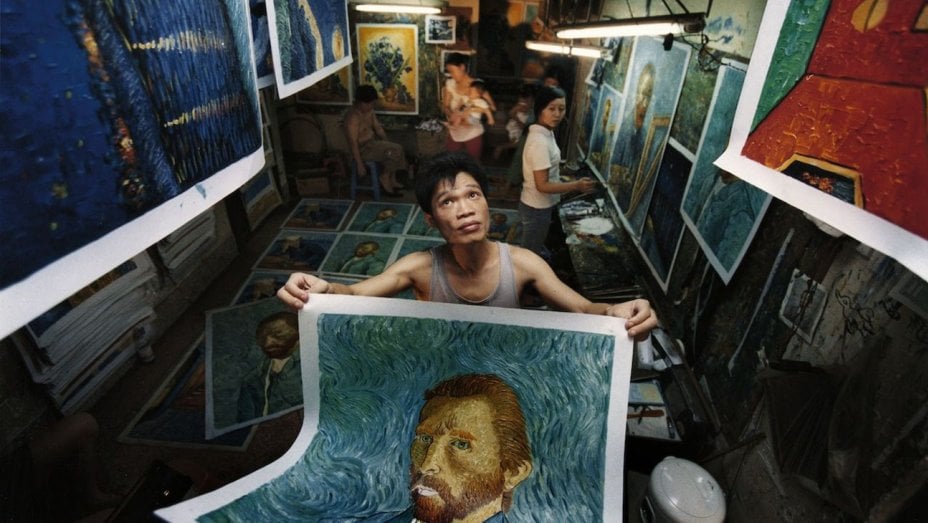
When the artist returned home to China, he finally painted his first original work, a new documentary shows.

Sarah Cascone

The cliche of the starving artist takes on new dimensions in China’s Van Goghs, a documentary film by father-and-daughter co-directors Haibo Yu and Kiki Tianqi Yu, which takes viewers into the studios of Dafen, the so-called oil-painting village in the city of Shenzen, China.
There, men and women dedicate themselves to the single-minded reproduction of famous paintings from the canon of Western art history, most notably masterpieces by Vincent van Gogh. After spending countless hours producing tens of thousands of Van Gogh copies, the painters of Dafen have, understandably, developed an emotional investment in the Dutch artist.
“I was sweating and could not sleep anymore,” says Zhao Xiaoyong, describing a dream in which he met the legendary Impressionist. “Van Gogh was all over my mind.”
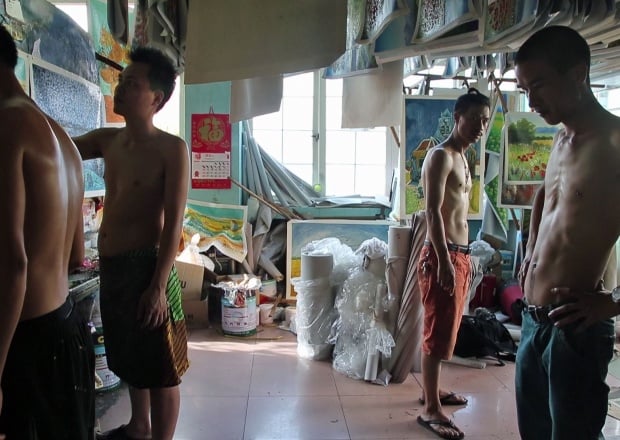
A shot from China’s Van Goghs. Film still courtesy of Century Image Media.
The film captures Zhao in his day-to-day life in the studio, painting tirelessly to fill massive orders for Van Gogh replicas. It also follows him in his quest to visit Europe and see, after 20 years of copying Van Gogh’s work, the originals.
“If we had a chance to go abroad, it would be different: our vision would be opened,” he tells one of his fellow painters.
Together with family and students, living and working in a two-bedroom apartment, Zhao has produced more than 100,000 faux Van Goghs. But he feels, deep in his heart, that without having seen Van Gogh’s creative genius in person, the knock-offs must be missing some kind of elemental creative spark.
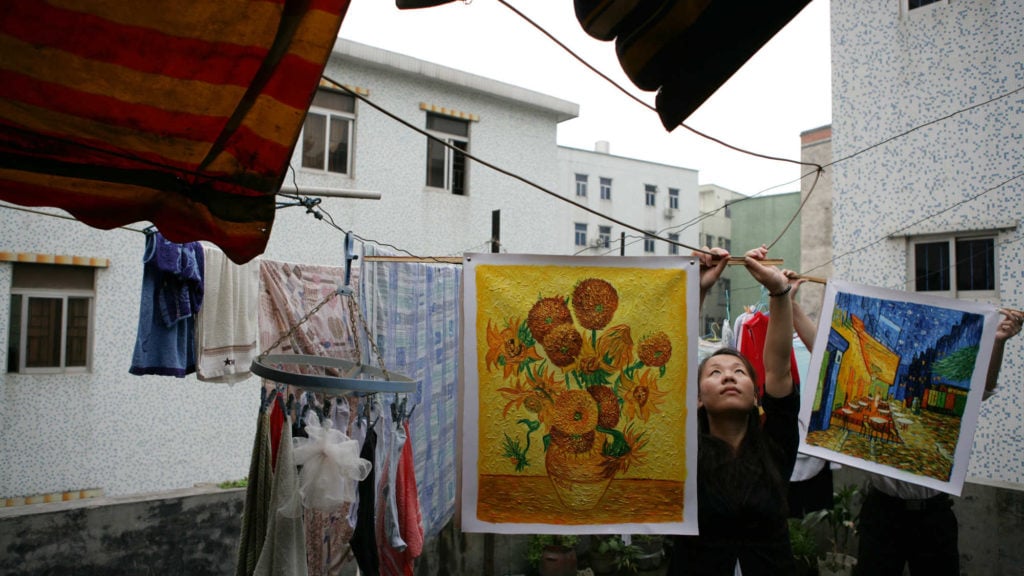
A shot from China’s Van Goghs. Film still courtesy of Century Image Media.
At times, the studio, staffed solely by Zhao, his wife, brother, and brother-in-law, must churn out seven or eight canvases a day to fill orders. “I don’t even have to think,” Zhao admits. “The process is all in my mind.”
Zhao’s studio is just one of many such replica factories. The Dafen oil painting village has grown from a shop of 20 at its founding in 1989 to 10,000 painters today—and a $650 million annual industry. The village has even become a minor tourist destination, with its own Trip Advisor reviews.
The pursuit of the perfect sunflower seems at times a thankless task. One young painter in the film is shown throwing down his brush in frustration after failing to satisfy his boss with his efforts. But while Dafen’s denizens struggle to earn a living, their expertly executed canvases are sold at huge markups to unsuspecting tourists in Western countries. (In recent years, a domestic market for their work has also risen.)
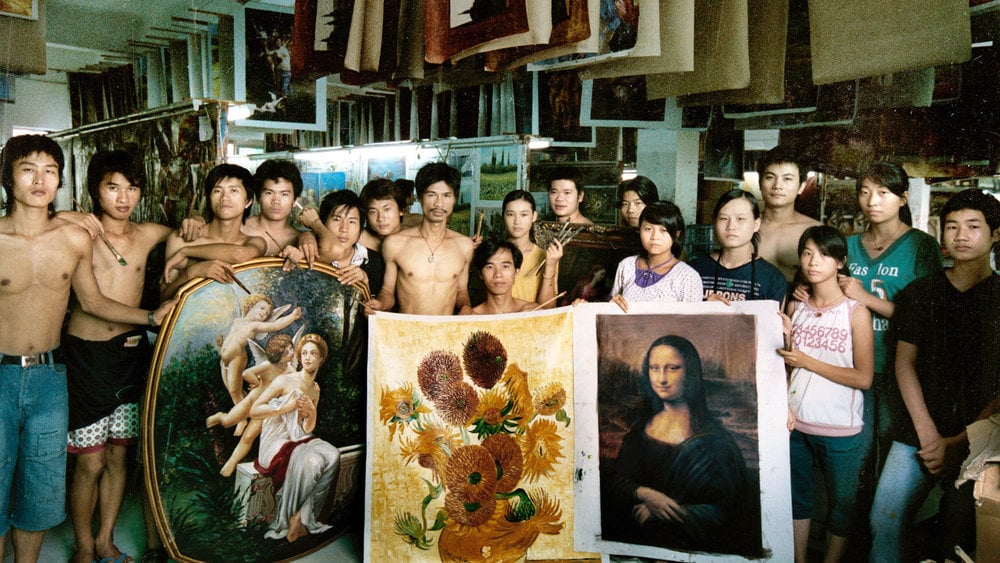
A shot from China’s Van Goghs. Film still courtesy of Century Image Media.
Filmmaker Haibo Yu lives in Shenzhen, and has been photographing the painters of Dafen for more then ten years, winning a World Press Photo Award for one of his images in 2006.
“It is an unreal place; you walk between the Rembrandt paintings and those by da Vinci and Monet. And you see the low-paid working class between the world-famous masterpieces,” Haibo’s daughter, Kiki Tianqi Yu, told Dutch newspaper de Volkskrant. “Their lives are real, full of real issues and real concerns.”
More than just a means of earning a living, painting becomes an all-consuming passion for many of the men and women of Dafen. And their collective failure to truly live up to Van Gogh’s greatness, despite their masterful ability to imitate his brushstrokes, becomes a source of angst.

A shot from China’s Van Goghs. Film still courtesy of Century Image Media.
For entertainment one night, they screen the 1964 Van Gogh biopic, Lust for Life. The artist’s death brings tears to the eyes of the painters, who have clearly come to idolize him. Zhao and his friends also cannot help but compare their own struggles with that of Van Gogh, who only sold one painting in his lifetime.
The Yus spent months filming Zhao uncertain, at first, if he would follow through on his plans to travel abroad. His journey to Amsterdam and France is both the fulfillment of a long-held dream and an eye-opening experience. Zhao soon stumbles across one of his own paintings, being sold not, as he hoped, at an upscale gallery, but at a souvenir shop.
The trip plants a seed, a yearning, that Zhao might become an artist in his own right, following his own creative impulses, rather than faithfully imitating another artist’s work.
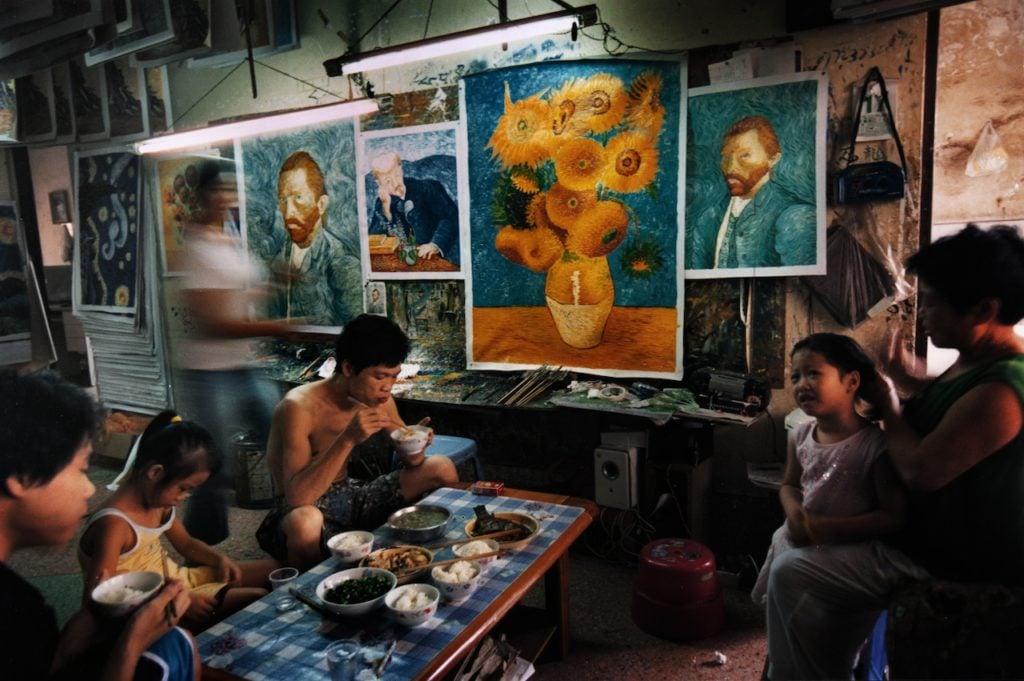
A shot from China’s Van Goghs. Film still courtesy of Century Image Media.
After 20 years, Zhao laments, “I don’t even have a single piece of my own. I’ve only been copying, copying.” Seeing Van Gogh in person, he felt pressured to do more, to try and match the great master’s boundless creativity, not just his techniques.
After his return to China, Zhao paints his first original work. It shows his studio, with him and his family hard at work on an order of Van Goghs.
Zhao looks, for the first time, fulfilled. He encourages his fellow copyists to do the same. “People might say our paintings are not very good,” Zhao says, “but if we wait 50 or 100 years, there will be a generation who understands us and appreciates our paintings.”
See the trailer for the film below.